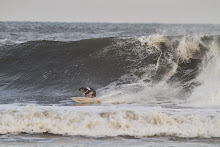Lobsta report from Newport,
Rhode Island, that is.
Walk on the city dock today.
Piled high with lobsta traps.
What's that smell?
Sure is strong.
Barrels of dead skates
ferment in the sun.
Skates must be cheap,
and the lobstas must love them.
They crawl into the trap,
And head for my steaming pot.
How can the animal
who eats such
smelly, nasty stuff
taste so good on my plate?
DaveC
BTW, no lobstas on my plate yet, hopefully soon!
____________________________________________
Billy,
Here are a couple of attempts at alternatives, for what they are.
1. The handling of sea hares alters the sea hare's behavior/state,
which in turn induces lobsters to attack. (Granted, this is a variant
of alternative e. And, it doesn't explain why lobsters outside the
reserve don't attack [but that wasn't one of the 3 given observations,
was it?])
2. The overcrowding of lobsters inside the reserves results in more
aggressive behavior in general, inducing them to attack sea hares, sea
urchins, and other defended invertebrates.
Question: Could analysis of lobster tissues indicate whether the
lobsters are eating sea hares or sea urchins or other defended
invertebrates? That is, are there elements or compounds that are
somewhat unique to sea hares &/or sea urchins and other defended
invertebrates that are preserved even when ingested by a lobster and
therefore detectable in the tissues of the lobsters that eat them? If
so, then might that be a way of corroborating the field observations
that reserve lobsters eat them while lobsters residing outside the
reserves do not. I.e., the way C4 can be used to determine the amount
of corn based foods eaten by someone as discussed in Michael Pollan's
Omnivore's Dilemma.
Enjoying the e-mails.
Rob
Here are a couple of attempts at alternatives, for what they are.
1. The handling of sea hares alters the sea hare's behavior/state,
which in turn induces lobsters to attack. (Granted, this is a variant
of alternative e. And, it doesn't explain why lobsters outside the
reserve don't attack [but that wasn't one of the 3 given observations,
was it?])
2. The overcrowding of lobsters inside the reserves results in more
aggressive behavior in general, inducing them to attack sea hares, sea
urchins, and other defended invertebrates.
Question: Could analysis of lobster tissues indicate whether the
lobsters are eating sea hares or sea urchins or other defended
invertebrates? That is, are there elements or compounds that are
somewhat unique to sea hares &/or sea urchins and other defended
invertebrates that are preserved even when ingested by a lobster and
therefore detectable in the tissues of the lobsters that eat them? If
so, then might that be a way of corroborating the field observations
that reserve lobsters eat them while lobsters residing outside the
reserves do not. I.e., the way C4 can be used to determine the amount
of corn based foods eaten by someone as discussed in Michael Pollan's
Omnivore's Dilemma.
Enjoying the e-mails.
Rob
_____________________________________________
I need more info about the undergrads. How long did it take them to witness the two attacks? Were they looking for that behavior? Did they have anything to gain by their observations?
Semi
___________________________________________________________
I kinda like b too, so somewhat of a variation on that: perhaps in
closer quarters lobsters are more territorial, therefore more aggressive
with food offerings of any type. Have you tried other non-appetizing
offerings to see if they behave the same way?
Also, I'm quite ignorant about crustaceans, including gender, so will
assume there are both male and female of the species. So, are the
attacks on the sea hares primarily male? Female? Doesn't matter?
jeff
closer quarters lobsters are more territorial, therefore more aggressive
with food offerings of any type. Have you tried other non-appetizing
offerings to see if they behave the same way?
Also, I'm quite ignorant about crustaceans, including gender, so will
assume there are both male and female of the species. So, are the
attacks on the sea hares primarily male? Female? Doesn't matter?
jeff
_____________________________________________

No comments:
Post a Comment